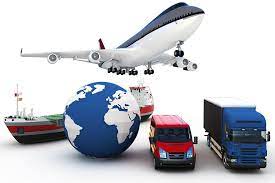The first step in launching a transportation business is to determine if there is a market for the services you offer. This is important, because if there is no market for your product or service, you will have difficulty surviving in the long run. You can do this by conducting a market analysis. This involves looking at your competitors and how they deliver comparable services. This research can help you identify gaps in the market and pain points that your rivals may be experiencing.
Trucking industry
The Indian trucking industry is growing at a rapid rate. The country is witnessing the rapid growth of the automobile sector and the e-trucking business. The trucking business in India is gaining more popularity as compared to railway transportation. The advantages of trucking over rail transportation include low maintenance costs, better access to remote areas and higher speed. In addition, e-trucking websites enable truck owners and those seeking delivery vehicles to connect.
Today, e-commerce websites have introduced online freight platforms to facilitate the delivery of cargo. This has led to the growth of digital freight brokers in India. Global companies are entering the market, posing a competitive threat for domestic startups. However, the long-haul movement will remain dominant in the market. In addition, the quality of road infrastructure and the legislation surrounding it will affect the profitability of trucking companies. Ultimately, e-commerce will transform the trucking industry in India.
Passenger bus service
With the rise of new technology and the growth of urban population, India has increased its demand for passenger buses. The country has a large network of roads and railways, and the National Highways Development Project is equipping national highways with four and six lanes. There are several projects being undertaken to improve the country’s transport network, including the Golden Quadrilateral in Mumbai and the Kathipara Cloverleaf Interchange in Chennai. The average speed of vehicles on Indian roads was 20.7 km/h (11.9 mph) in Delhi, 19.2 km (13 mph) in Mumbai, and 16.9 km (7 mph) in Kolkata.
Several new policies are aimed at improving the public transportation system in India. The Federal Government’s Passenger Mobility Enhancement (FAME) program aims to make the system more efficient and profitable. It will create an incentive program for state bus transport undertakings to invest in new technology and reduce their losses. The government is also planning to switch over to Bharat Stage VI emission standards by 2020, which is equivalent to Euro VI.
Light-duty truck segment
The light-duty truck segment in India is dominated by Indian OEMs, which include Tata Motors, SML Isuzu, Force Motors, and Ashok Leyland. Other prominent players in the segment include Mahindra, Volvo, and VECV. The segment is expected to show a CAGR of X% between 2018 and 2027. The growth in the segment is driven by the growing urbanization and a gradual transition from rustic economy to web-based business. Overall, this segment of the transport business is expected to grow at a CAGR of 12% during 2019 and 2024. The market for each type of truck in India is driven by the individual economic growth it generates. Historically, the light-duty truck segment has experienced consistent growth, while the heavy-duty truck segment has shown similar growth over the last five
In India, light-duty trucks are most preferred for short-distance shipments. They can carry both perishable and non-perishable goods, and are medium-sized and low-cost. Their versatility makes them ideal for intra-city operations. They are ideal for carrying milk, vegetables, couriers, and other goods. These vehicles have low operating costs and are also well-equipped with features such as a spacious cabin, optimum loading elevation, and air conditioning.
Sub-contracting
Sub-contracting in the transport business is one of the best ways to secure contracts for a low-scale transport business. A subcontractor is a transporter who does not contract directly with the principal, but instead contracts a recognized transport company to carry the contract. The recognized transport company will then pass the contract on to another transporter, and the two parties will have a contract. This type of business model is increasingly popular in India.
Although sub-contracting can save time and money, it can also lead to legal issues. For instance, payment conditions can be tied to the principal contractor receiving payment from the employer. However, this type of arrangement is not necessarily illegal, as the courts have consistently upheld the privity of contract principle. For this reason, care must be taken when drafting specific contractual obligations and terms. This is to avoid legal squabbles in the future.
Investment required
An investment of at least Rs. 10 lakh is required to start a transport business in India. It is an excellent business opportunity with high profit potential. The demand for transport services in India has been increasing at an annual rate of 10%. The demand for cabs is one of the fastest growing business sectors in the country. These cabs are digitally operated and can be booked by passengers for intra-city or inter-state rides.
A highly competitive market and steep financing options have created a severe competition in the transportation industry. A newly started private bus transportation business may face adverse effects of the fluctuating Indian market. It is important to have financial support to meet the start-up costs. However, if the business can sustain itself for the first year, it can make a healthy profit. For this reason, the investment required for starting a transport business is considerable.










